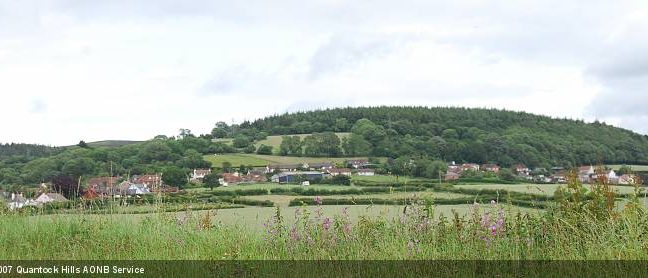Home
Welcome
Welcome to West Quantoxhead Parish Council. Based in the Quantock Hills AONB, West Somerset.
West Quantoxhead or St Audries
Well, that’s strange for starters! Yes we do have two names! Domesday tells us that in 1086 the village was called Cantocheve Minor. It’s had a dozen names since and today is still known as either or both St. Audries or West Quantoxhead.
Secondly, to enlarge the deer park, the village was moved up until about a century ago, half a mile out of a valley to its present site on the foothills of the Quantocks! Originally it was in the area north of the Church. The present village commenced in the 1870s but only developed to its present size after the 1920s. Anything older is few and far between!
It’s a bit like the name on the tin, we’re west of the Quantock’s head whilst our larger neighbour is east of the Quantock’s head. The parish is a mile wide, 2.5 miles long southwards from the Bristol Channel coast and measures just over 1500 acres. It rises from sea level via 100foot cliffs to just over 1,000 feet. It includes the hamlet of Weacombe, along with original farmsteads at Bidwell, Pitt, Staple, Rydon, Home Farm and Landshire.
The parish has a population of about 500, a lovely Victorian church, two manor houses, one north of the Church and the other at Weacombe, about 160 dwellings, a pub, a garage, service station and shop, 3 farms, two holiday centres, two B&Bs, a Village memorial Hall and a redundant telephone box! Many properties have superb views across the Channel and or across the coastal valley to the Brendon Hills and Exmoor. Both the Belt, Westwood and Stileage woods were planted with native species but including evergreen oak in the 1860s and large acreages of assorted conifers were planted on Stowberrow Hill and above Staple during the 1920s.
The Acland and Acland-Hood families at St.Audries House spent a fortune in conjunction with John Norton, their architect, during their 90 years here following 1835. They built the Church, the Village School, extended St.Audries House, built new roads and drives, four gate lodges, coastal defences, a slipway, the then model Home Farm, a gas works, the ‘Row’ for their estate workers, a bridge over the A39 to extend the deer park onto the hills, extended ponds and gardens, planted shelter belts and built culverts to carry the Vinneycombe stream most of the way to the clifftop waterfall.
They sold St.Audries manor and estate in 1924 and in 1935 it became a thriving Public Girls School until 1991. It then briefly became a Buddhist Centre and is now an established marriage centre known as St.Audries Park.
The original twin walls built along the A39 east of the village were a nightmare for drivers being so narrow and claustrophobic especially until the Deer Park Bridge was demolished in 1950 and the inland wall was removed in 1988.
Whilst demolishing our medieval Church and building our present Church, a temporary wooden Church was built and later moved to Stolford where it is still in use. Our present Church was opened in 1856 and is dedicated to St.Etheldreda who was an East Anglian Princess who became Queen of Northumbria and later founded Ely Cathedral. Our Church has a ring of six bells, the earliest two being dated 1440. It is home to a Barrel Organ built by Bevington and Sons in 1794 as well as its original organ built by J.W.Walker & Sons in 1856.
Weacombe House was also recorded in 1086 but unlike St.Audries was home to a huge number of successive families. It was largely rebuilt in the late 1700s and has undergone major refurbishment by its present owners in recent years.
Notable notes from the records:
“A male child that was found at the foot of Staple Hill in this Parish, September ye 18th (1738) was baptised ye 12th November by the name John whose surname was agreed to be Staple Hill Foot!” He and his children lived on for several generations at St. Audries!
A mayor of Taunton lived here for ten years after 1736, his youngest daughter married the 1st Earl Lucan and daughter married the 2nd Earl Spencer in 1781. His other three daughters married into the St.Aubyn and the Fellowes families.
A later owner of the estate married the widow of the Duke of Wellington’s Quartermaster General William De Lancey who was killed at Waterloo.
John Norton Griffiths an almost worldwide engineer and truly astonishing hero of WW1 was born at Rydon Lodge in 1871.
By Duncan Stafford
